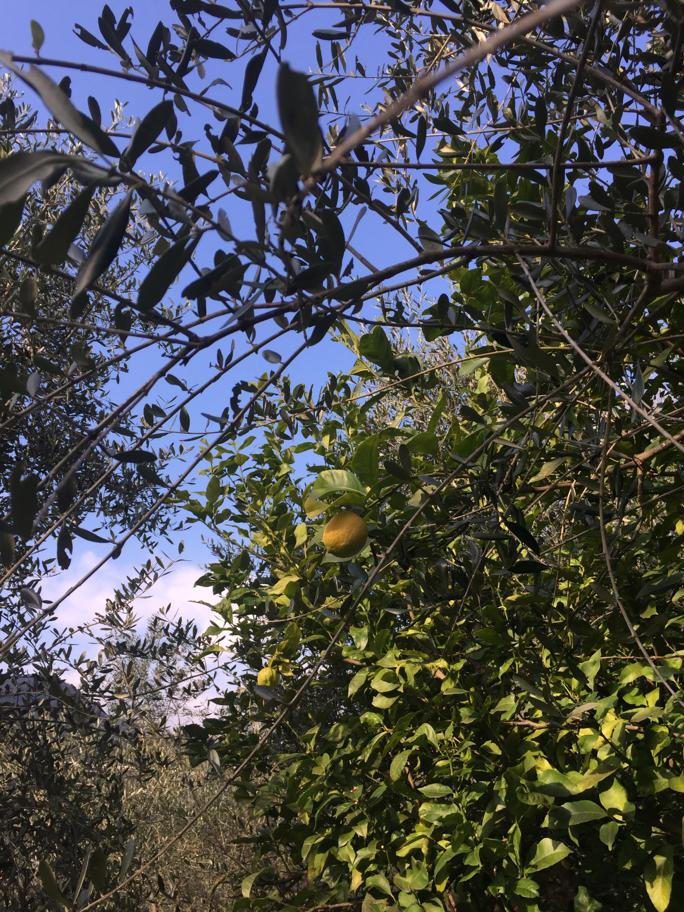Never have I felt such a need to be resourceful as I do now. I am almost in my 5th week isolated in the Italian countryside, and living out the Coronavirus pandemic by staying home in a little house perched on a hill on the edge of a small town by the mediterranean sea, taking isolation very literally. Although I can’t go down to the sea, I can catch a peek of it from my makeshift office window. It’s certainly not a bad way to pass this pandemic and I feel incredibly lucky to be able to be here.
Living on this little hill and staying in quarantine means that I am getting very familiar with my surroundings, getting to know the various plants in the garden and their uses, which mostly involve eating. There are a handful of lemon and orange trees, as well as several different herbs and edible plants. Although it’s not quite adventuring into the great outdoors, it gets me my nature fix and allows me to be a little more aware and appreciative of my immediate environment.
While foraging in the garden we discovered wild asparagus, which was used in a pasta, a sprig of rosemary plucked from the garden spruced up a ragù, upon finding chard, we mixed it with ricotta to make ‘torta salata’ (pie) and when discovering wild garlic, proceeded to make it into a pesto. With more time on our hands it’s easier to dedicate it to really thinking about what we have and what we can make, sometimes even from scratch. Since we don’t know how long we will be staying in isolation, we are trying to be resourceful and also creative, making delicious and simple food.
My absolute favourite discovery so far is the many uses of stinging nettles. I grew up surrounded by them, yet never knowing how deliciously delicate they taste in a herbal tea. They have to be handled with care (gloves recommended) in order to not get stung, once plucked and washed they can be blended and added to dough to make pasta, or to eggs as a sort of frittata, or the leaves can be added to boiled water along with a slice of lemon for a comforting night cap.
This countryside experience has definitely been an eye opener and one that I hope to take back to Milan with me, granted I won’t have access to a garden with lemon trees, but perhaps a few potted herbs on the window sill and an occasional forage around the parks for nettles and wild garlic could suffice.
Here’s the recipe for Wild Garlic pesto, since it is easily found across Europe and the U.K. I have found it to be best on bruschetta, as an accompaniment to meat, or as a salad dressing as it has a very fresh taste. I think it would also work nicely with cold pasta on a warm spring day!
Wild Garlic Pesto
How to spot wild garlic (Allium Triquetrum):
Usually found in an overgrown garden, out on a walk or in any slightly wild green patch, it can be distinguished by its strong garlic scent, however if you still need convincing then check the petals of the flower for green lines, as in the above pic.
Ingredients:
- 150g foraged Wild Garlic
- 50g peeled almonds (walnuts or pine nuts could also work)
- 50g parmesan
- extra virgin olive oil
- Squeeze of lemon (add lemon peel for extra zest – around 1/3 of a lemon)
- salt and pepper to taste
Steps:
- Sterilise a jar
- Wash the wild garlic leaves thoroughly and dry
- remove any flowers and chop the leaves finely.
- Blend!
- If you have a blender, place all the ingredients in and whizz together.
- If you don’t have a blender chop up your almonds very finely and add to the leaves – use a pestle and mortar to grind together with oil and remaining ingredients
- If you don’t have a pestle & mortar then chop all the ingredients together as finely as possible, adding oil, lemon, parmesan and seasoning once chopped..
- add to your sterilised jar and top with a bit of oil.
Happy foraging!
Emily x x x










Pingback: Outdoors Skills – On The Doorstep